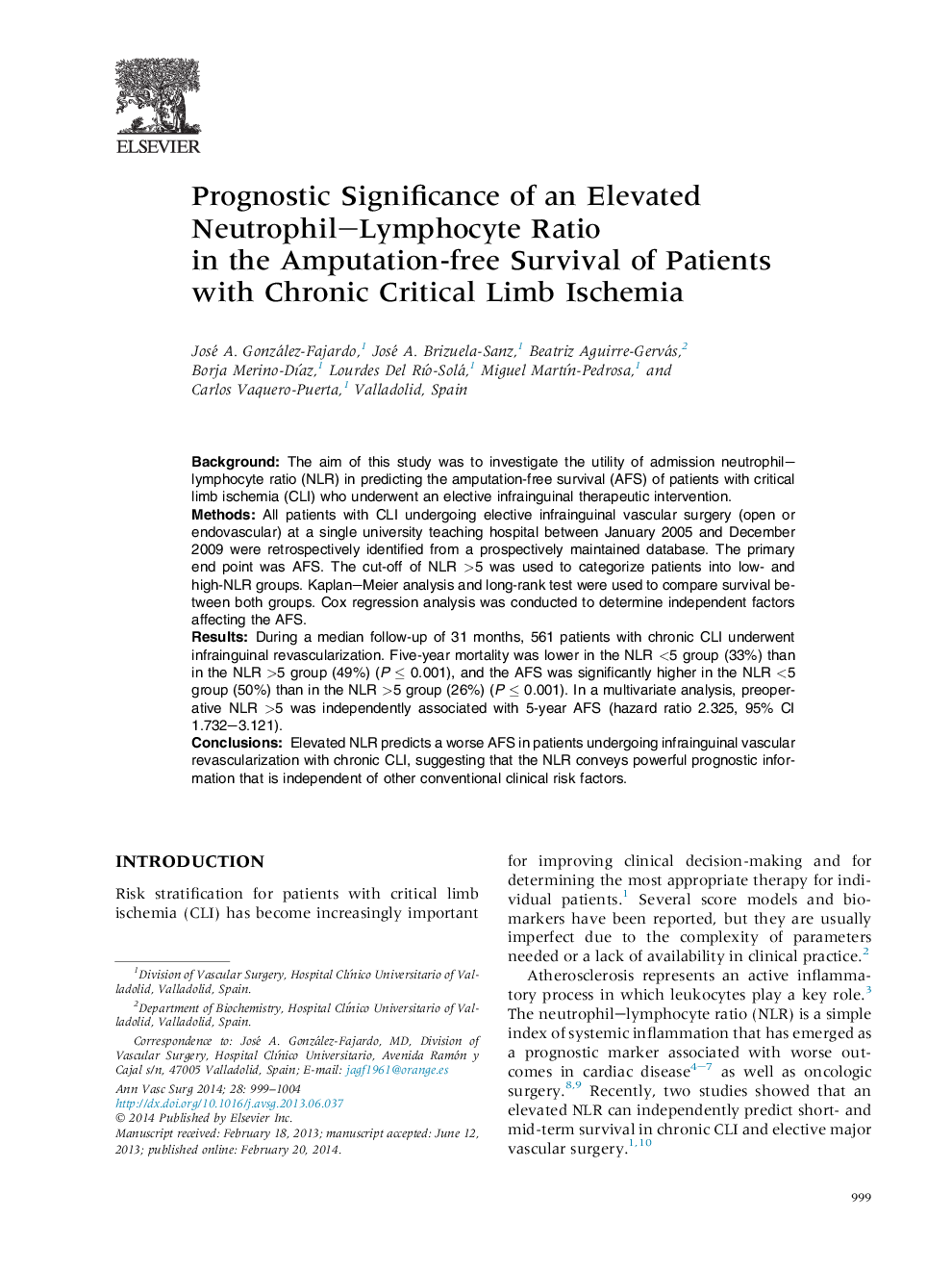| Article ID | Journal | Published Year | Pages | File Type |
|---|---|---|---|---|
| 2886699 | Annals of Vascular Surgery | 2014 | 6 Pages |
BackgroundThe aim of this study was to investigate the utility of admission neutrophil–lymphocyte ratio (NLR) in predicting the amputation-free survival (AFS) of patients with critical limb ischemia (CLI) who underwent an elective infrainguinal therapeutic intervention.MethodsAll patients with CLI undergoing elective infrainguinal vascular surgery (open or endovascular) at a single university teaching hospital between January 2005 and December 2009 were retrospectively identified from a prospectively maintained database. The primary end point was AFS. The cut-off of NLR >5 was used to categorize patients into low- and high-NLR groups. Kaplan–Meier analysis and long-rank test were used to compare survival between both groups. Cox regression analysis was conducted to determine independent factors affecting the AFS.ResultsDuring a median follow-up of 31 months, 561 patients with chronic CLI underwent infrainguinal revascularization. Five-year mortality was lower in the NLR <5 group (33%) than in the NLR >5 group (49%) (P ≤ 0.001), and the AFS was significantly higher in the NLR <5 group (50%) than in the NLR >5 group (26%) (P ≤ 0.001). In a multivariate analysis, preoperative NLR >5 was independently associated with 5-year AFS (hazard ratio 2.325, 95% CI 1.732–3.121).ConclusionsElevated NLR predicts a worse AFS in patients undergoing infrainguinal vascular revascularization with chronic CLI, suggesting that the NLR conveys powerful prognostic information that is independent of other conventional clinical risk factors.
